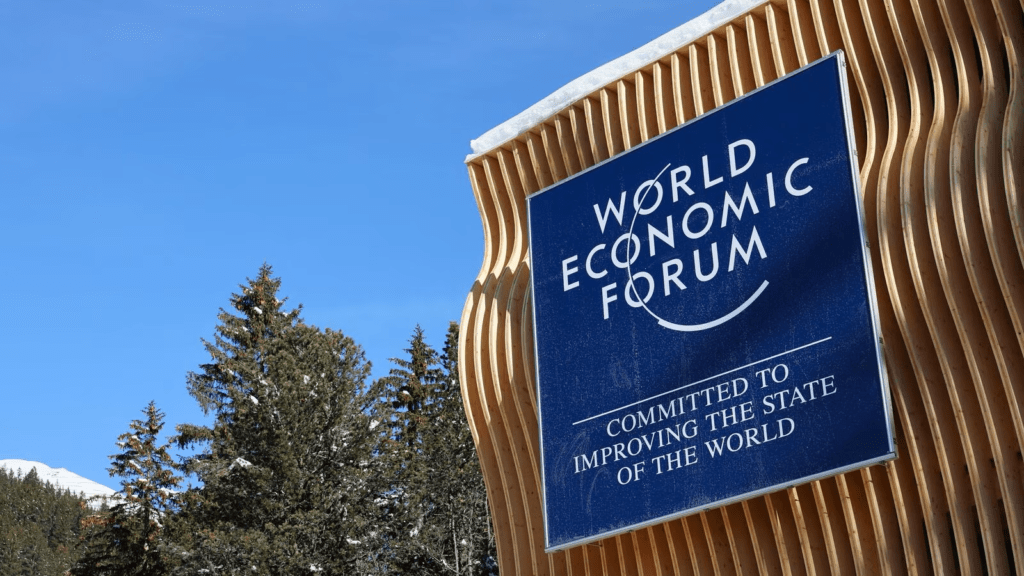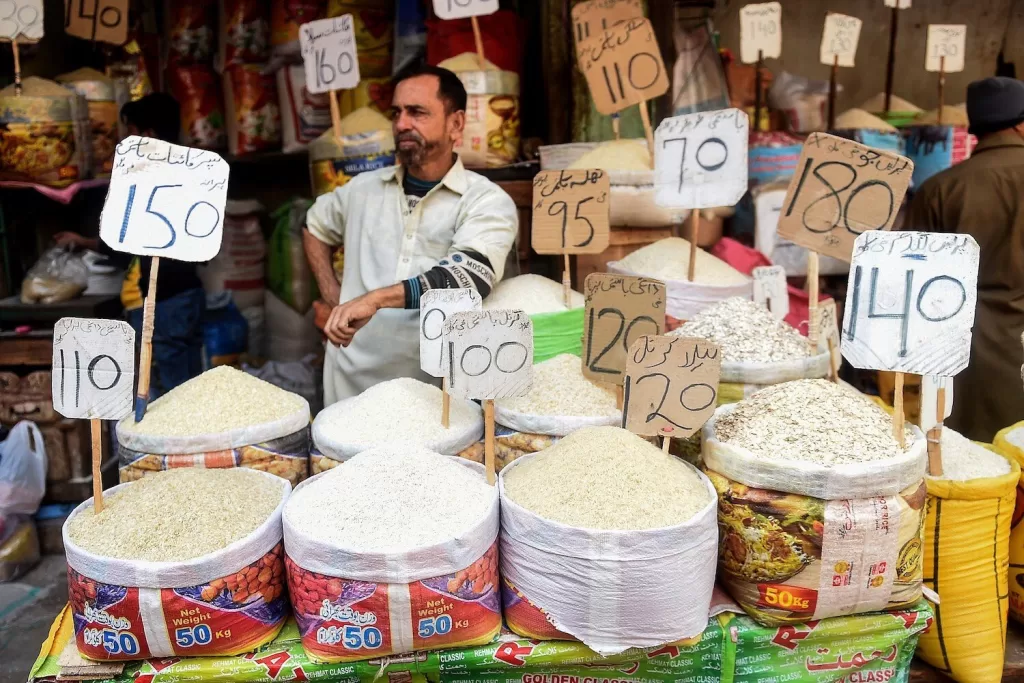With a population exceeding 220 million, Pakistan stands as one of the most populous nations globally characterized by a vibrant blend of languages, traditions, and religions. It is a promising land with an abundance of natural raw materials, yet, Pakistan’s economic health is not stable. The political and governance changes, along with poverty, income inequality, and unemployment cast a shadow over the aspirations of millions, underscoring the urgency for sustainable development and inclusive growth. With all this, Pakistan has seen a consumerism trend emerge as proof of progress and a point of debate.
Consumerism is an economic theory that believes that personal well-being and happiness depend upon the continuous purchase of goods and services and emphasizes that excessive consumption of goods and services benefits the country’s economy. It also suggests that goods and services that are highly demanded by the masses should be produced, encouraging repeat purchases and higher consumption. It is believed that consumer spending leads to economic growth and production and can elevate living standards. Some argue that it is quite the opposite as there is a waste of the already limited resources, leading to waste, pollution, and greed. Nowadays, advertisements have transcended from being informative to providing bait for the individual to buy a product or service online or through physical stores, just to create a societal norm with material possessions. With this relentless pursuit, where needs have evolved into wants, consumerism has permeated every facet of the Pakistani Society.

Pakistan navigates its path towards modernity and a way to increase economic growth by increasing consumption. Consumerism has always been associated with a surge in economic status and drives strategists to create a positive status and in many cases an illusion that private consumption has created economic growth in a country. According to the World Economic Forum Pakistan is forecasted to become the 7th largest consumer market by the end of 2030. The World Economic Forum predicts this as consumer spending has increased by almost 12% since 2021. Pakistan might see a positive rate, but at what cost? Is Consumerism a tool for economic growth and prosperity, or does it worsen existing disparities and environmental degradation?
Consumption has increased in Pakistan despite the current landscape which is marked by persistent socio-economic challenges such as poverty, income inequality, and unemployment. Even with the hurdles that Pakistan is facing, the consumer market is experiencing rapid growth, driven by increasing disposable income, urbanization, and most importantly, technological advancements. According to World Bank estimates, a significant 40% of the population lives below the poverty line, and the basic income of the poor ranges from rupees 20,000 to 30,000 per month. Yet, with the struggle for survival, the consumption of mobile phones has increased within this income bracket, as more than half of these individuals possess mobile phones. This example shows the complex interplay between socioeconomic challenges and consumer behavior on detrimental factors of wants and needs.
Consumerism prompts economic growth and enhances living standards across Pakistan. Consumer spending accounts for a significant portion of Pakistan’s GDP and it stimulates demands for goods and services and drives market expansion. Moreover, the diversification of products and services in response to consumer preferences promotes competition and innovation in the marketplace, leading to technological advancements and improved customer experience. For example, the rise of e-commerce platforms like Daraz and Foodpanda has revolutionized the way Pakistanis shop and dine, providing convenience and access to a product and services at far lower prices. With easy payment solutions, EasyPaisa and JazzCash, consumption has increased as individuals from all socio-economic backgrounds can now participate in the formal economy. With such a positive vibe of buying and selling and more access to affordability, consumerism can contribute to social mobility by providing opportunities for upward economic mobility.
Pakistan has also seen a surge in home-based entrepreneurs who have opened small businesses in diverse sections such as food catering, Resin Art, embroidery, stationery, and jewelry hauls, fueled by the rise in online business and the influence of consumerism. Enabled by social media platforms, these entrepreneurs leverage digital marketing to reach a wider audience and drive sales. This entrepreneurial boom not only enriches the local economy but also promotes cultural diversity and global interconnectedness as new products and ideas are exchanged. Furthermore, the government often uses household spending under consumerism to boost production, prevent recessions, and stimulate demand. It gives a much-needed boost to the economic resilience.
Consumerism’s positive impact on consumption patterns presents a promising outlook for Pakistan’s economic landscape, opening opportunities for prosperity and progress.
Before delving into the criticisms of consumerism, it is essential to understand why it’s experiencing a surge in Pakistan. The rise of consumerism can be attributed to various factors shaping the country’s socio-economic landscape. Over time, there has been a notable increase in disposable incomes and wages, empowering the middle class to indulge in a broader range of goods and services. Despite rising inflation, this trend persists largely due to the expansion of financial inclusion in Pakistan. The availability of loans, credit facilities, and Buy Now, Pay Later options has made it easier for individuals to make purchases even when facing immediate financial constraints. This accessibility to credit encourages consumer spending, driving the consumption of electronic appliances and other technological products. Additionally, the pervasive influence of social media and its influencers plays a significant role in promoting consumerism. Captivating advertisements and influencer endorsements entice individuals to purchase products as a means of social status validation.

Despite rising prices, the trend of increased consumption remains noticeable, which could potentially lead to adverse effects. Affluent consumers, who have the means to do so, may be inclined to purchase more goods than necessary, while the middle class tends to prioritize maintaining their social status. This trend is reflected not only in the automotive industry but across various sectors of the economy. For instance, since 2019, there has been a notable decrease in sales figures, observed particularly in the first fiscal quarter of 2024. Furthermore, the rise of consumer debt poses a risk to financial stability, as individuals may accumulate debt to sustain their consumption habits, leading to financial fragility and economic vulnerabilities. This can also cause damage to Pakistan’s goal of financial inclusion. The relentless pursuit of material possessions also encourages a culture of overconsumption, contributing to environmental degradation and resource depletion. In support of this, Jeff Bezos once said, “What consumerism really is, at its worst, is getting people to buy things that don’t really actually improve their lives.”
One of the biggest issues that consumerism deals with is environmental degradation and resource depletion due to the excessive production and use of the materials. Rapid urbanization and industrialization have resulted in deforestation, pollution, and habitat destruction along with the rising demand. Unfortunately, In Pakistan, there are not many ways to dispose waste and there isn’t a check on such conditions which have caused a heightened risk of climate change due to unsustainable consumption practices. For instance, the use of single-use plastics, inefficient waste management, and non-recyclable materials contribute to the pollution in rivers and oceans endangering marine life and human health.
The culture of debt and overleveraging among individuals and households leads to a cycle of indebtedness and financial instability. As people strive to keep up with societal expectations and maintain their perceived social status, many borrow beyond their means. This trend can be particularly seen in weddings, where households go beyond their personal income. This leads to a high level of consumer debt and it poses systemic risks to the banking sector and overall economic stability. In Pakistan where financial literacy levels are relatively low, the consequences of indebtedness can be particularly severe, trapping the individual in a cycle of poverty and debt bondage. Consumerism also lets individuals prioritize material wealth over holistic well-being, neglecting essential aspects of life such as family, community, and personal growth. This erosion of social capital and individual fulfillment poses a significant threat to the fabric of society, undermining the values of empathy, compassion, and solidarity – essential for collective progress and resilience.
Furthermore, it can be argued that consumerism as a theory is more of a short-term goal as it presents a boon for economic growth as increased household incomes and purchasing power drive up consumer spending, leading to higher GDP figures and economic indicators. Contributions are made to tax revenues which can be allocated towards public services and infrastructure development which favors any economy. However, in the long run, imports start to increase which might cancel out GDP Growth. Pakistan is already tied up in the vicious cycle of currency depreciation, increased debt, and decreased confidence for more investment opportunities, and yet the consumerism arc cannot be led to somehow change the perspective of the crumbling situation. For example, the imports can only be offset by exports creating overall long-term growth, but with just a few concentrated exports such as leather, rice, and cotton, Pakistan cannot compete with the competitiveness of others. Consumerism favors imports as consumption is increased. Consumerism can be used as a theory partially with monitored controls so it can provide advantages while minimizing the adverse effects. This requires a multifaceted approach that combines policy interventions, behavioral change initiatives, and community engagement. Firstly, there is a need for stricter regulations and enforcement mechanisms to curb unsustainable consumption practices and promote responsible production and consumption patterns. Governments can implement measures such as eco-labeling, product standards, and waste reduction targets to incentivize businesses and consumers to adopt more sustainable practices. Bareeze introduced sustainable fashion by incorporating biodegradable tags that can be planted to grow plants. This aim was to reduce waste and promote eco-friendly practices in the fashion industry and Pakistan.
Secondly, financial literacy and consumer education are crucial and individuals need to be empowered to make informed decisions about their consumption habits and financial well-being. by providing people with the necessary knowledge and skills to manage their financial responsibility, policymakers can help mitigate the risks of over-indebtedness and financial vulnerability, nurturing a culture of prudent financial management and suppleness. In 2017, the State Bank of Pakistan led and launched the National Financial Literacy Program (NFLP) in which banks like Faysal Bank, National Bank of Pakistan, and Bank AL Habib participated. The program aimed to empower individuals with knowledge and skills to make informed decision and mitigate risks associated with financial debt.
Lastly, promoting a culture of mindfulness and gratitude can help counteract the pervasive influence of consumerism and promote a more meaningful and fulfilling way of living. Governments can issue paid advertisements with skits and infographic details to make people aware of the adverse effects of excessive consumption. Those infographics can showcase practices like mindfulness meditation, gratitude journaling, and minimalism which are not only related to the Millennial population of Pakistan but also to the Gen Z population that is increasing. This can shift focus away from material possessions to more present moments and things that matter truly in life, vitalizing inner fulfillment and well-being.
In conclusion, while consumerism presents a complex interplay of economic growth, social dynamics, and environmental impact, its unchecked spread in Pakistan raises critical questions about its long-term sustainability. Ultimately, the question of whether consumerism is a tool for economic growth and prosperity or an indication of disparities and environmental degradation cannot be answered definitively. The answer is based solely on how consumerism reaches an economy with how it impacts the factors. For Pakistan, it’s still uncertain because there are many other problems besides consumerism. We need to focus on fixing the root issues in our economy and making positive changes. To create a better future, we must tackle the reasons behind unsustainable spending habits and encourage more thoughtful ways of living. Consumerism isn’t all bad, but too much of it can cause problems. In the end, finding the right balance between economic progress and sustainable living will be crucial for shaping Pakistan’s future trajectory towards prosperity and harmony.





